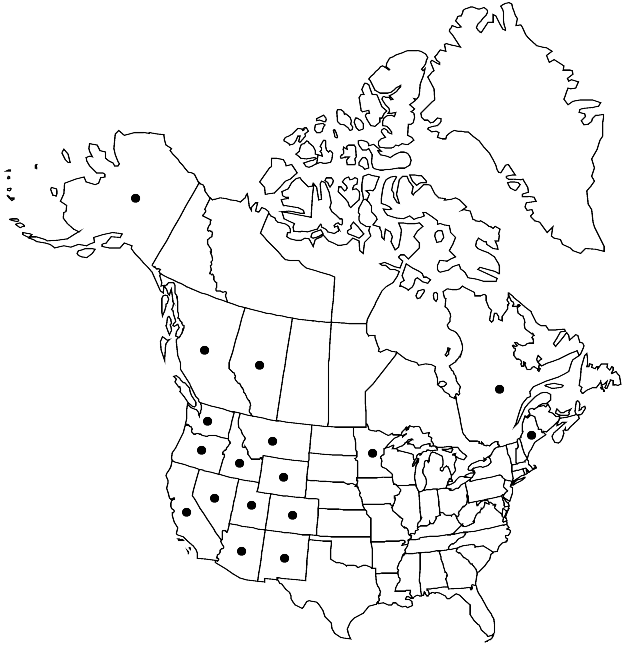Difference between revisions of "Ptychostomum lonchocaulon"
Phytologia 87: 21. 2005.
FNA>Volume Importer |
FNA>Volume Importer |
(No difference)
| |
Revision as of 22:01, 16 December 2019
Plants in dense or open turfs, green or yellow-green. Stems 1–2(–3) cm, comose, innovations comose or somewhat elongate and evenly foliate; somewhat radiculose. Leaves green, twisted to contorted when dry, ovate-lanceolate, flat to weakly concave, (1–)2–3 mm, not much enlarged toward stem apex; base not decurrent; margins revolute to mid leaf or beyond, limbidium strong, in (2–)3–4(–6) rows, concolorous; apex acuminate; costa long-excurrent, awn ± smooth; proximal laminal cells 3–4:1, same width or sometimes wider than more distal cells; medial and distal cells rhomboidal, (12–)14–20 µm wide, 3–4:1, walls thin to firm, never oblique to costa. Specialized asexual reproduction absent. Sexual condition polyoicous, mixed synoicous and with male-only gametangia. Seta 1–2(–3) cm. Capsule brown, elongate-pyriform, symmetric, 2–4 mm, mouth yellow; operculum conic, apiculate; peristome well developed; exostome teeth yellow basally, hyaline distally, lamellae usually straight mid tooth, pores absent along mid line; endostome not adherent to exostome, basal membrane high, 1/2 exostome height, segments with broadly ovate perforations, cilia long, appendiculate. Spores (12–)14–18(–20) µm, finely papillose, pale brown-yellow or green.
Phenology: Capsules mature May–Sep.
Habitat: Dry to damp soil
Elevation: low to high elevations (0-3500 m)
Distribution

Alta., B.C., Que., Alaska, Ariz., Calif., Colo., Idaho, Maine, Minn., Mont., Nev., N.Mex., Oreg., Utah, Wash., Wyo., Eurasia.
Discussion
Ptychostomum lonchocaulon is very similar to P. creberrimum, differing in sexual condition and its stronger, non-yellowish limbidium. In North America, P. lonchocaulon is primarily a western species, disjunct in Minnesota. The species has not generally been accepted by most workers, thus its world distribution is poorly known. V. I. Zolotov (2000) gave a good description of the species and its polyoicous sexual condition.
Selected References
None.